Japanese sustainable habits
When it comes to eco-friendly living, there is perhaps no better time to draw inspiration from than the past. Going back to a time before throw-away culture, we look to the Land of the Rising Sun, where Japanese sustainable habits have been the norm for centuries.
Forget the zero-waste movement – it’s unrealistic for most people. Instead, we encourage embracing mindfulness and paying attention to the way we consume. Here are 9 Japanese sustainable habits that we can learn from in order to work towards a more eco-friendly lifestyle.
1. Kintsugi (金継ぎ) – repairing broken items with gold
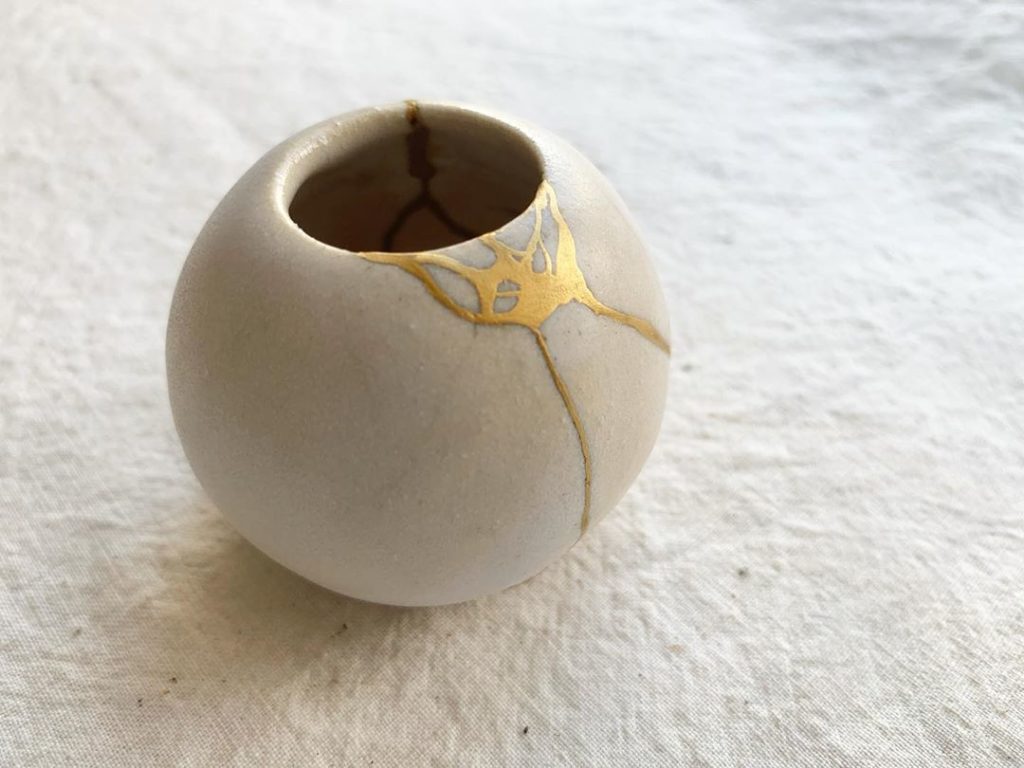
Image credit: @kintsugi_._
As cliché as it sounds, scars are beautiful – especially so in the case of kintsugi (金継ぎ), which can be loosely translated to “golden joinery”. Kintsugi is a traditional art form in which broken ceramic pieces are carefully mended with a lacquer resin mixed with powdered gold, silver, or platinum.
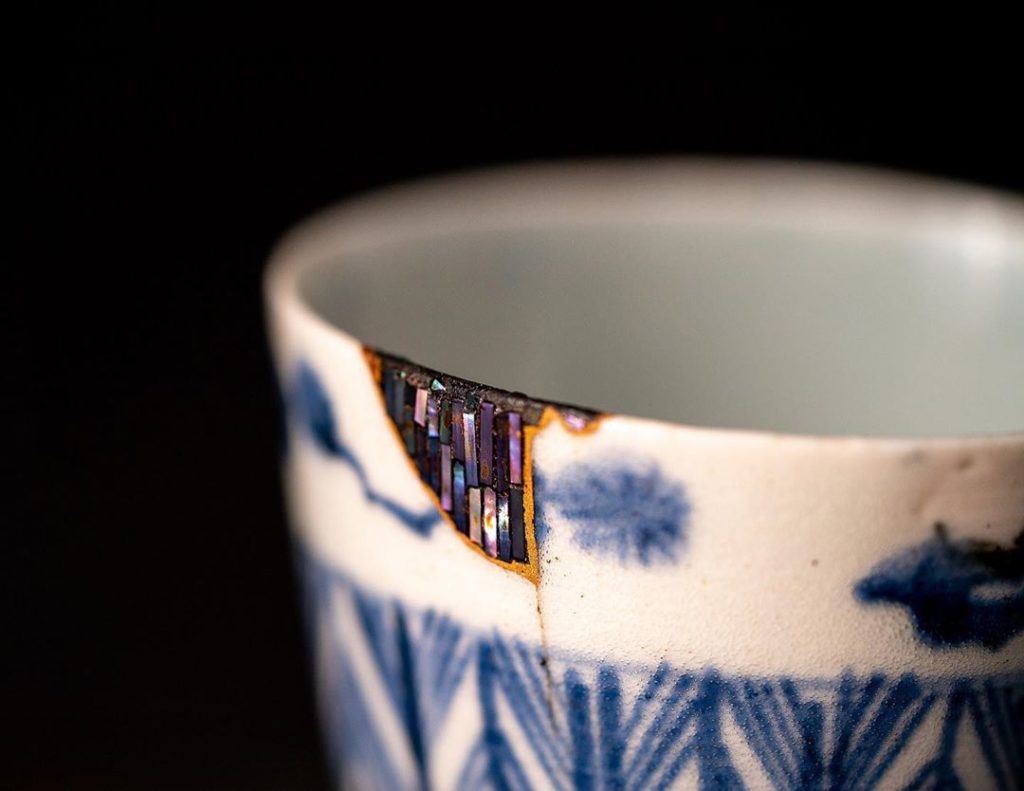
Broken part is filled with shell using a technique called “raden”.
Image credit: @tsukuroi_bito
This method of upcycling is said to have originated from as early as the Jōmon Period (13,000 BC to 300 BC) and became a widely used technique in Japan by the 17th century. Pottery and ceramic pieces were regarded as valuable commodities, so to simply discard broken pieces was considered wasteful.
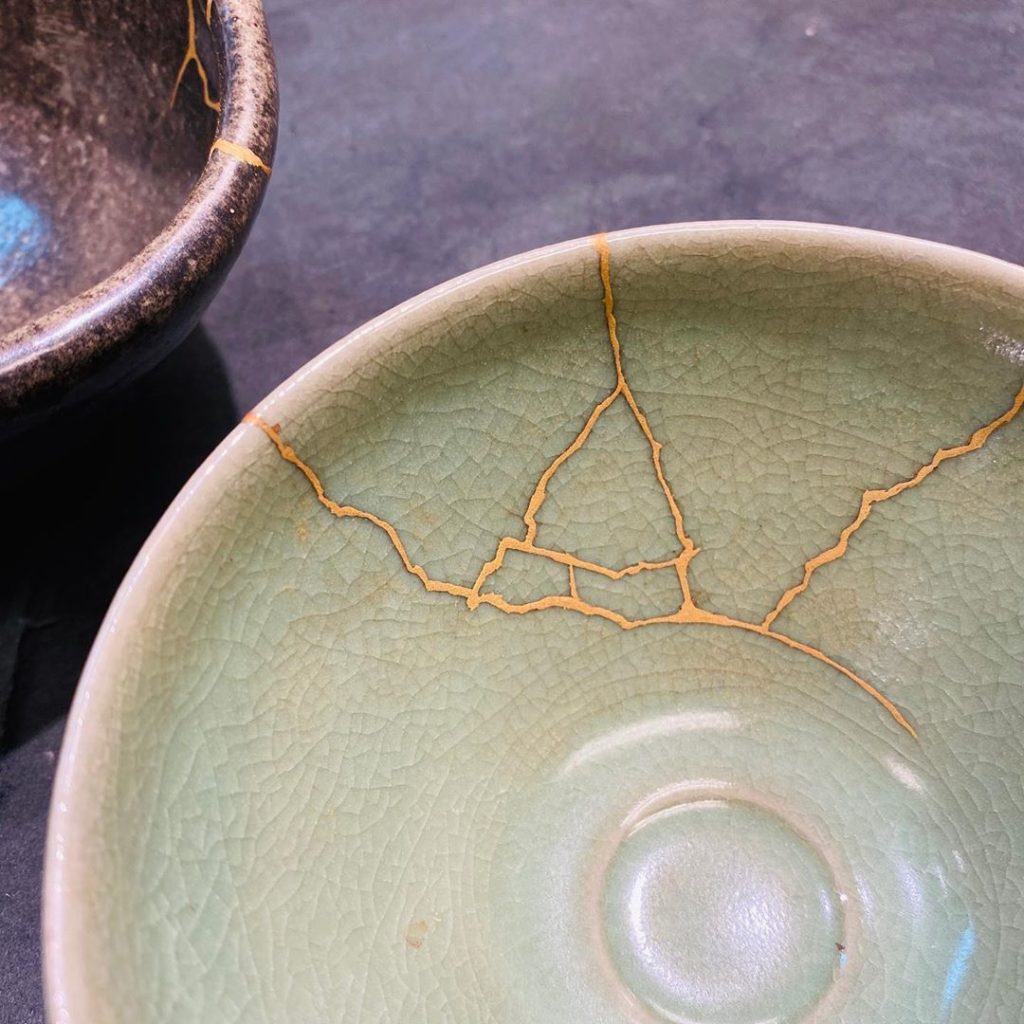
Image credit: @tsukuroi_bito
By using this beautiful and practical mending technique, the lifespan of ceramic ware can be prolonged. Repairs are intentionally kept visible so that the individual piece’s unique history can be emphasised, giving broken objects character and a second life.
2. Sashiko (刺し子) – mending fabric with embroidery
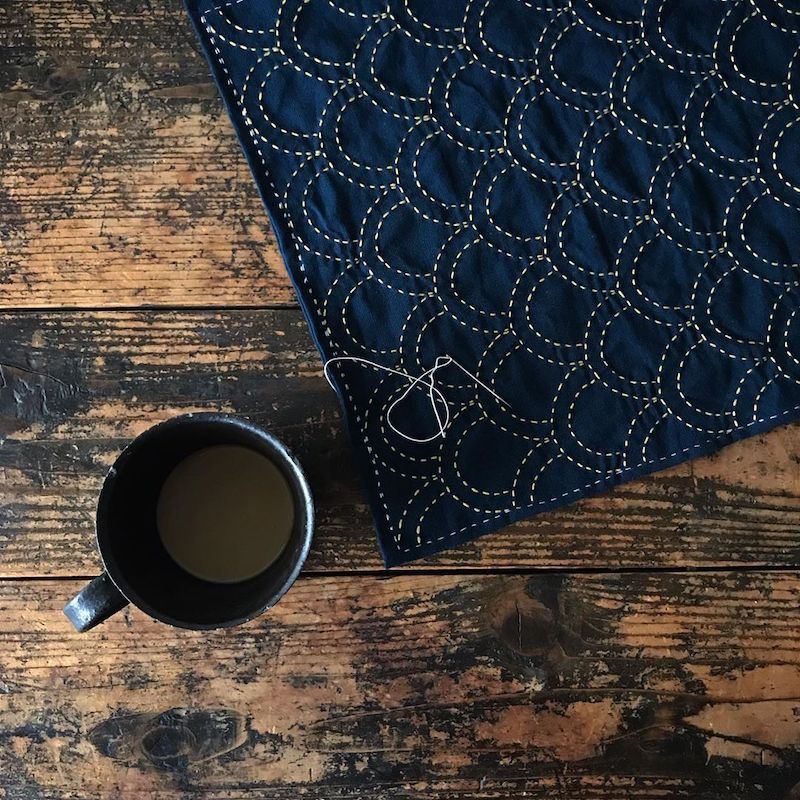
Image credit: @eye.r_a
Sashiko (刺し子) is a traditional embroidery technique that has been around in Japan since the Edo Period in the 1600s.
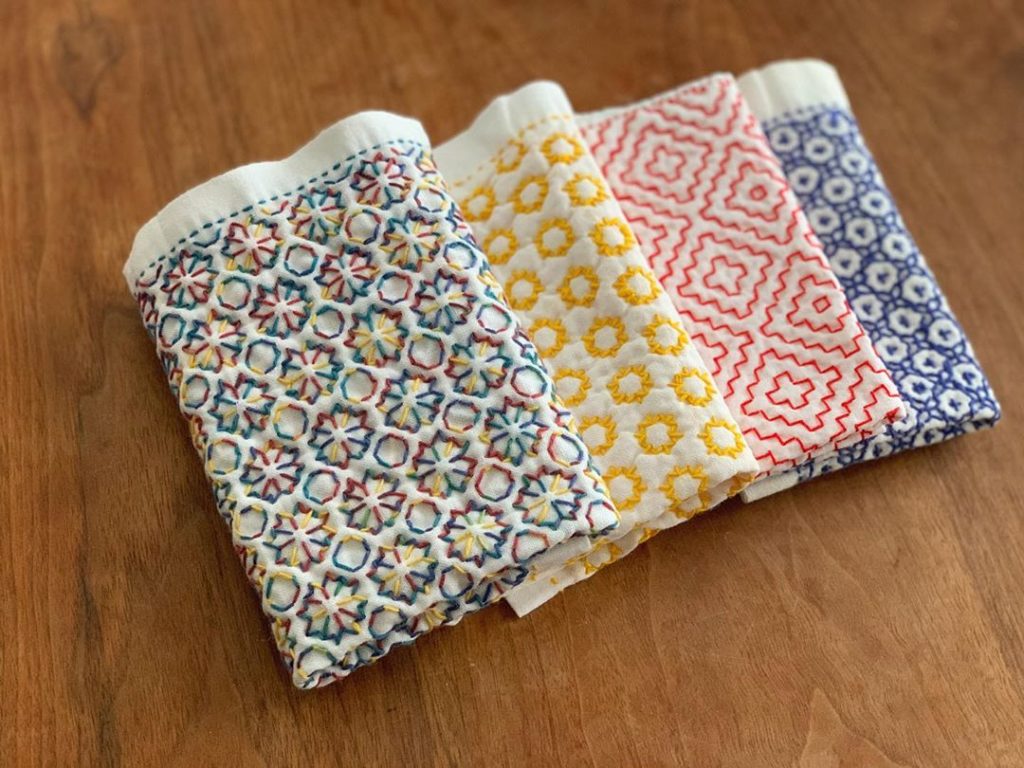
Image credit: @hananowa_cafe
Back then, cloth produced by hand weaving was valuable – most people procured cloth or kimono from second-hand clothing stores. When the fabric became worn out, resourceful commoners would upcycle these old textiles by repairing its wear and tear, or combine old and new fabric with sashiko (刺し子).
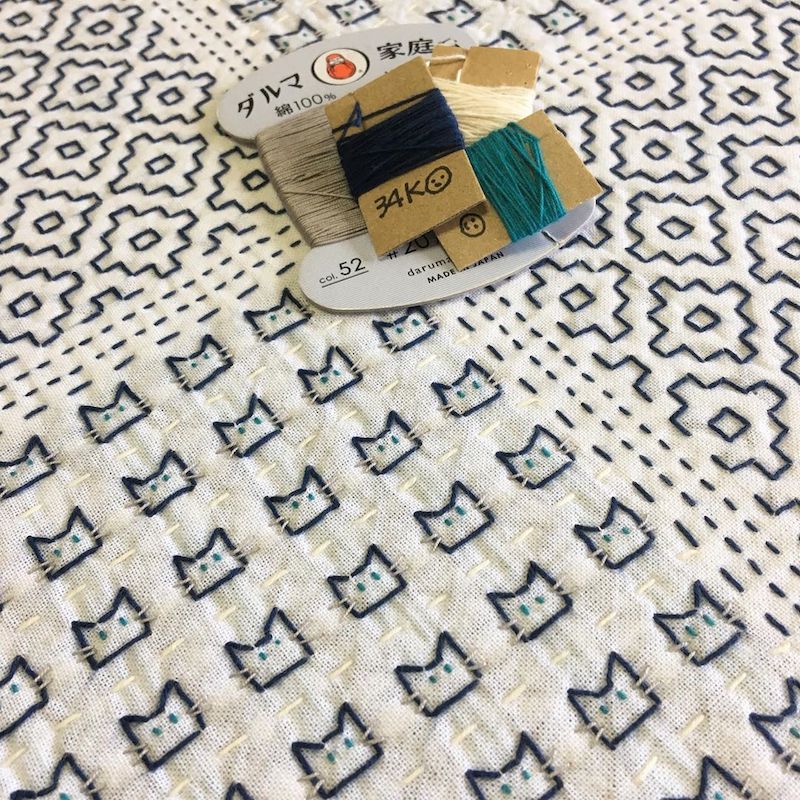
Image credit: @34koito
The beautiful stitches not only embellish old garments, but also make them more durable and warmer. Traditional sashiko is embroidered with white cotton threads on indigo blue cloth, usually with geometric patterns. Nowadays, the technique is more decorative than practical, so there are really no limits to creativity when it comes to patterns and colours.
3. Carrying around handkerchiefs
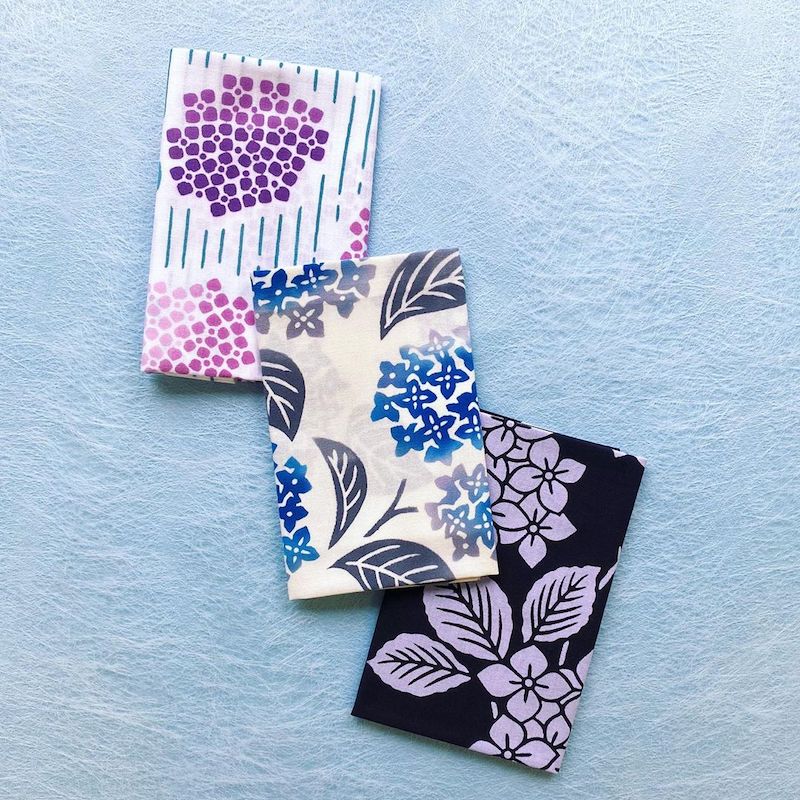
Tenugui, a type of thin Japanese towel made from cotton.
Image credit: @tenugui_kamawanu
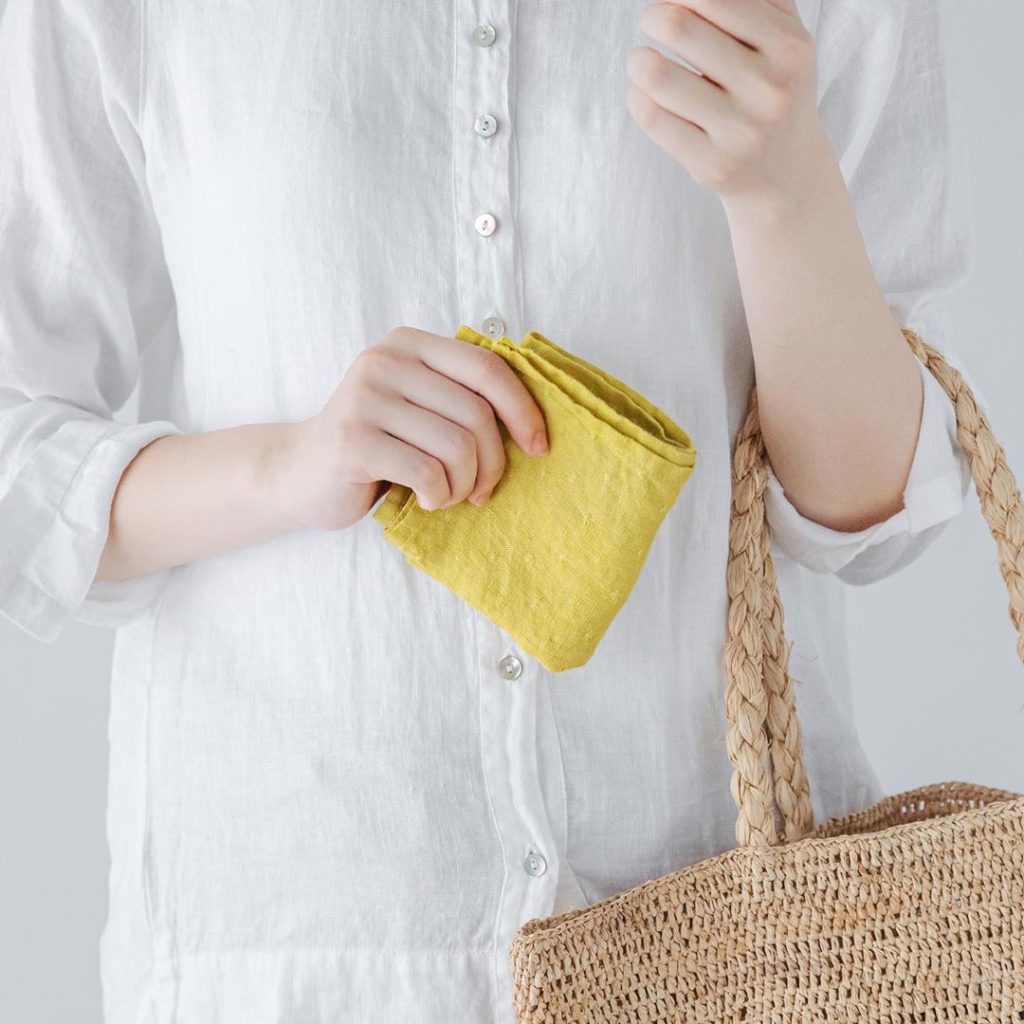
Image credit: @lino_e_lina
Summer brings with it many inconveniences, one of them being excessive sweating. Chances are, you will see many locals using handkerchiefs, instead of disposable napkins, to dab away their sweat during the hotter months.
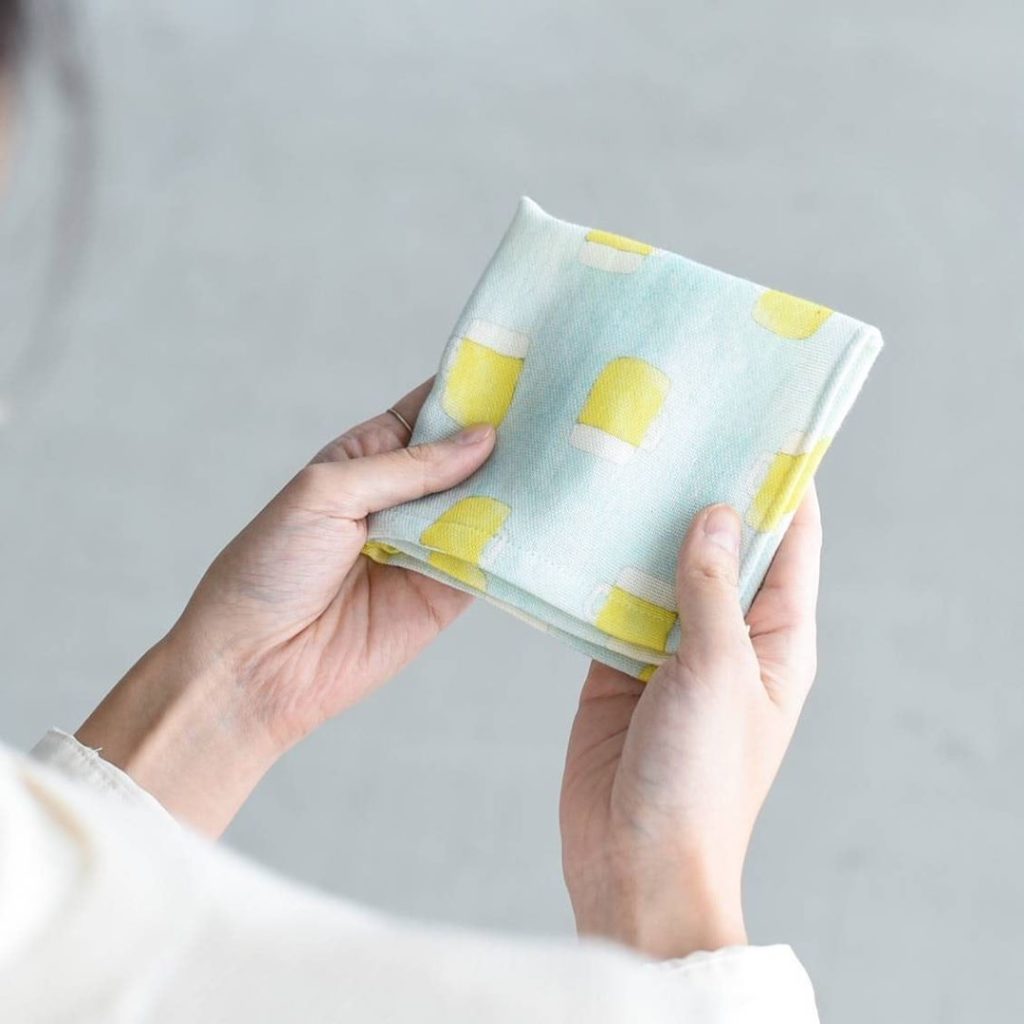
Image credit: @hokuoh_kurashi
Originally, tenugui (手拭い), a thin Japanese hand towel made from cotton, was the mainstream since the Kamakura Period. Thanks to the rise of domestic cotton cultivation in the Edo Period, cotton fabrics like tenugui became even more accessible to the general public.
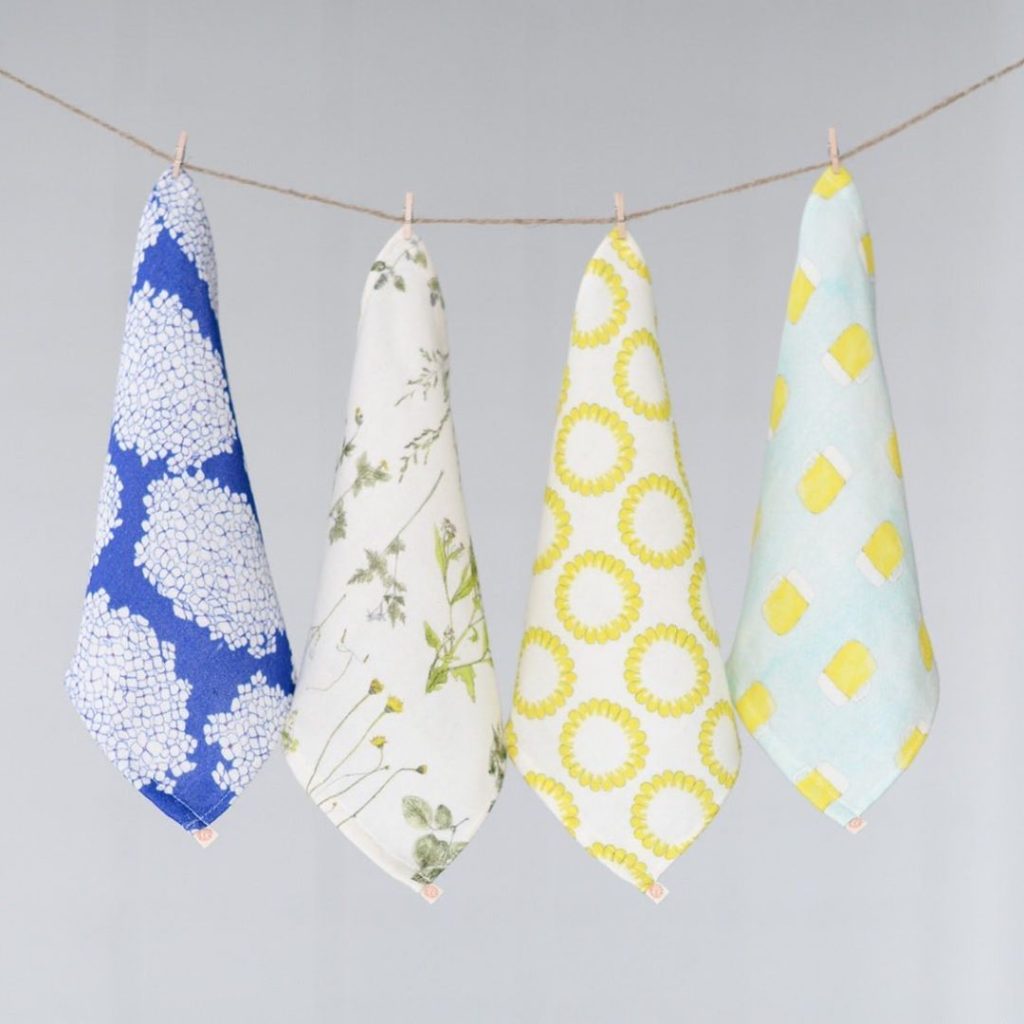
Image credit: @hokuoh_kurashi
However, the nationwide push towards westernisation during the Meiji Period encouraged the spread of western-style handkerchiefs. Consequently, tenugui was gradually phased out. Though they were expensive in the beginning, handkerchiefs became more affordable by the Shōwa and Taishō period.
Nowadays, aside from wiping away sweat, handkerchiefs are everyday essentials used to dry wet hands after a washroom visit. Many public restrooms in Japan – especially those in older buildings – don’t provide paper towels or hand dryers, so it’s best to carry around reusable towels.
4. Using leaves to wrap food
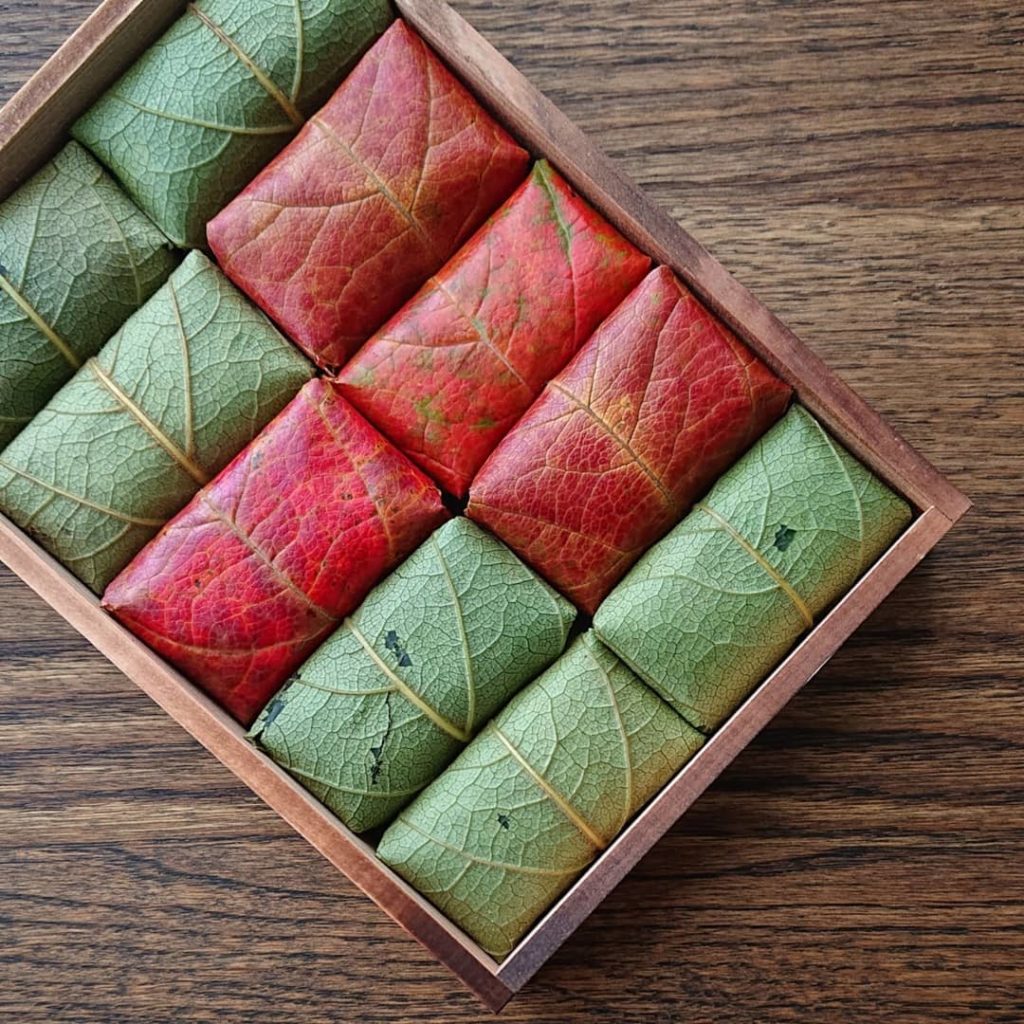
Persimmon leaf sushi from Nara
Image credit: @etsudragonfly
In Japanese cuisine, leaves are traditionally used to wrap food to inhibit the growth of bacteria and ensure that the food stays safe for consumption. A great variety of Japanese dishes are wrapped in leaves, but the most well-known ones are kakinoha-zushi (柿の葉寿司) and sakura mochi (桜餅).
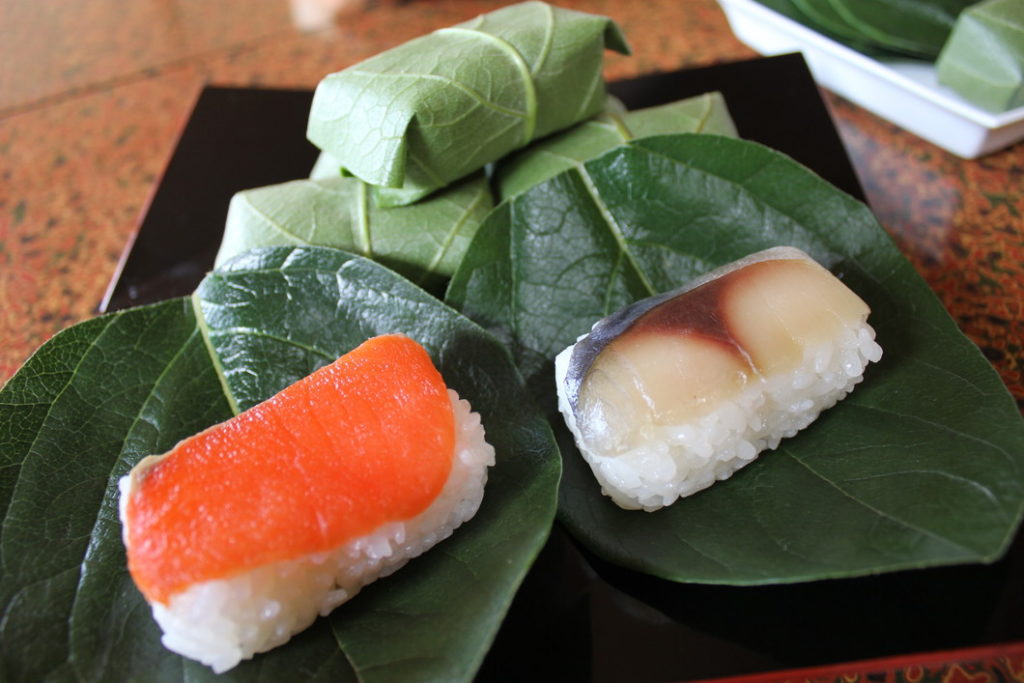
Image credit: Nara Visitors Bureau
Kakinoha-zushi is a special type of sushi that is neatly wrapped in persimmon leaf. During the Edo Period, fish caught from the sea took a long time to be transported to the city of Nara. As the fish required a large amount of salt to preserve, the heavily salted fish was almost inedible.
To solve this conundrum, the people in Nara enveloped fish in persimmon leaf, which is known to have antibacterial properties. The leaves also impart a sweet earthy aroma, which makes kakinoha-zushi different from the typical sushi found in Japan.
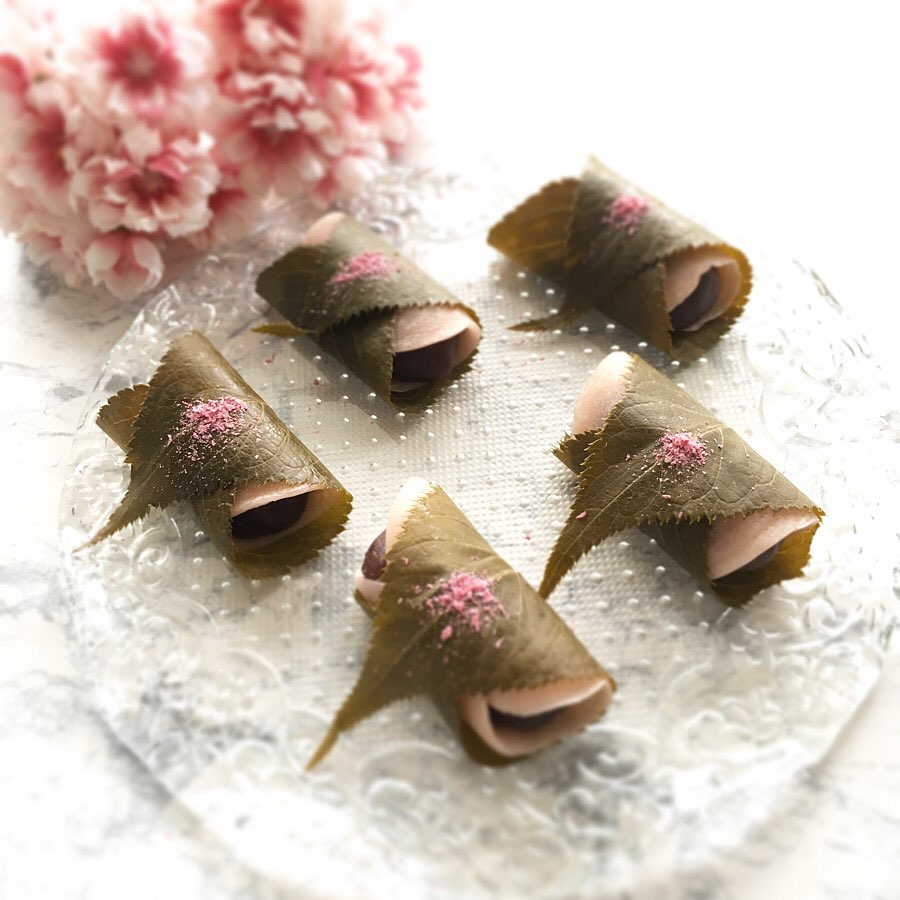
Chomeiji sakura mochi from Kanto region
Image credit: @sweetmarin.0301
The origins of sakura mochi are slightly different. The traditional Japanese confectionery is said to have originated 300 years ago in a shop near Chomeiji Temple and Sumidagawa River.
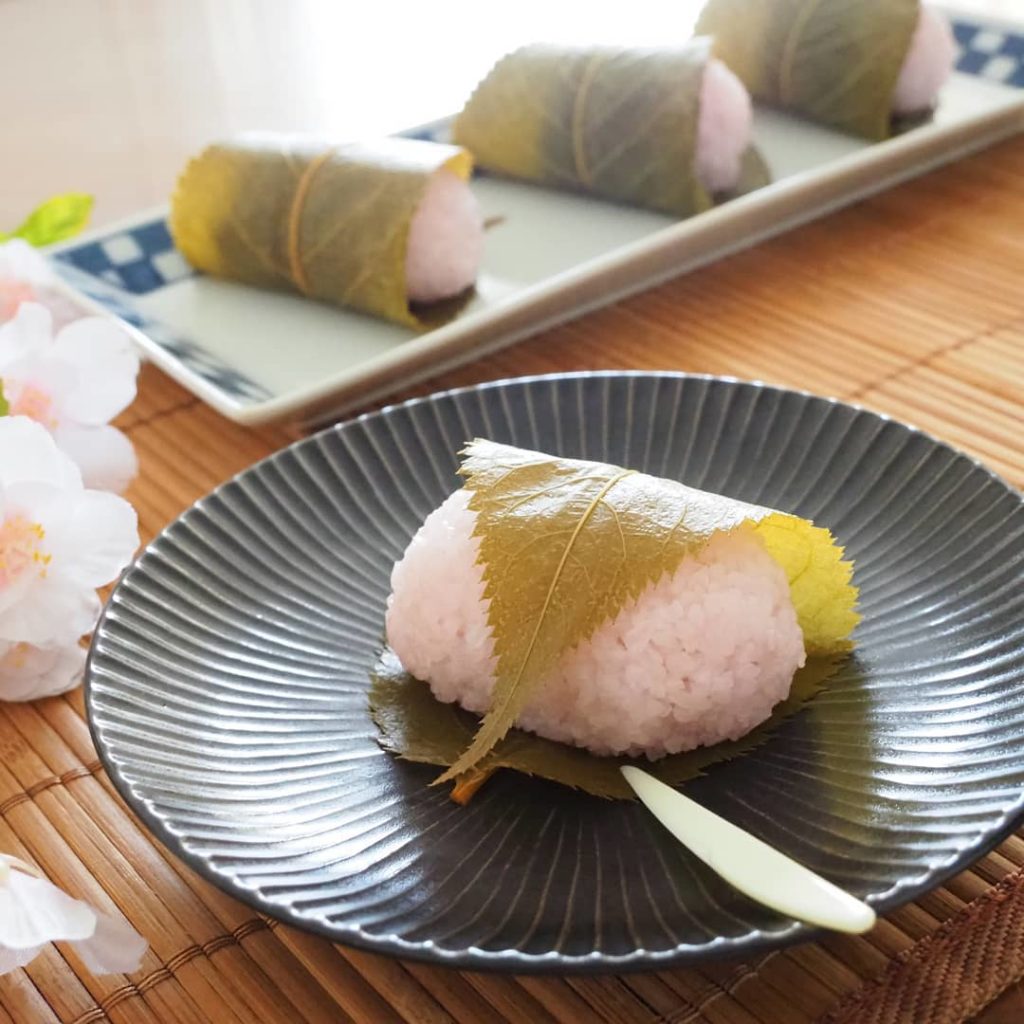
Domyoji sakura mochi from Kansai region
Image credit: @bnsweets
As the area is known for its rows of cherry blossom trees, there’s no shortage of sakura leaves. The temple’s gatekeeper who would sweep the fallen sakura leaves lamented its waste. So, instead of discarding them, the leaves were preserved and used to wrap the sakura mochi we know and love today.
Today, depending on who you ask, the leaf’s edibility is up for debate. Regardless, wrapping food with leaves is an eco-friendly alternative to plastic packaging.
5. Boro (襤褸) – patching fabric with cloth scraps
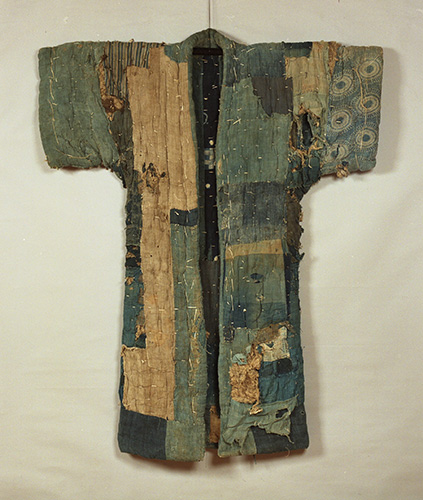
Image credit: Amuse Museum
Boro (襤褸), which literally translates to “rag” or “scraps”, is a traditional Japanese patchwork style. Old fabric pieces, which are typically dyed with indigo dyestuff, are recycled by patching and piecing them together to form wearable garments.
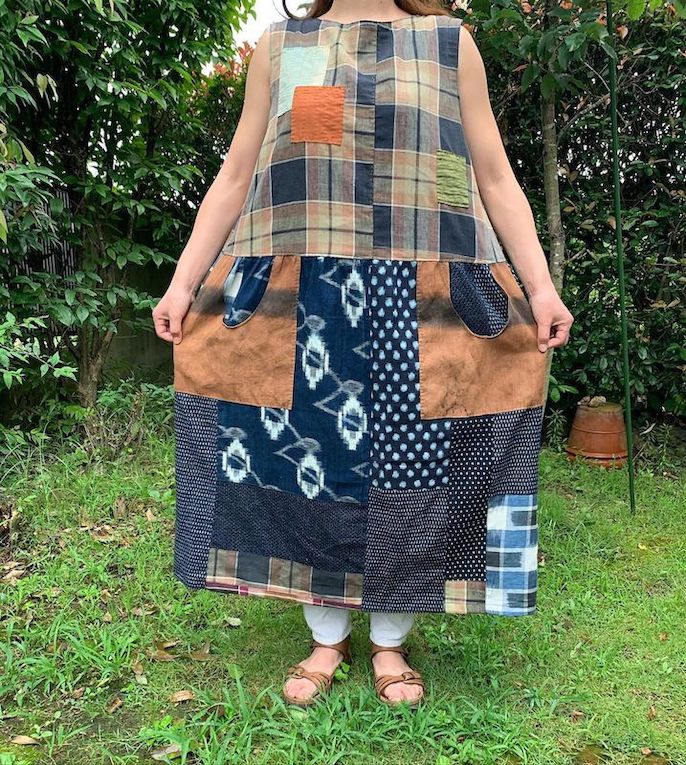
Image credit: @blue_movement2017
This method of upcycling was born out of necessity and practicality. During the Edo Period, it was difficult for commoners to get their hands on cotton as textiles were often reserved for the upper classes. So when a kimono or futon (traditional style of bedding) became worn out, it was usually fixed with a small patch of fabric and sachiko stitches.
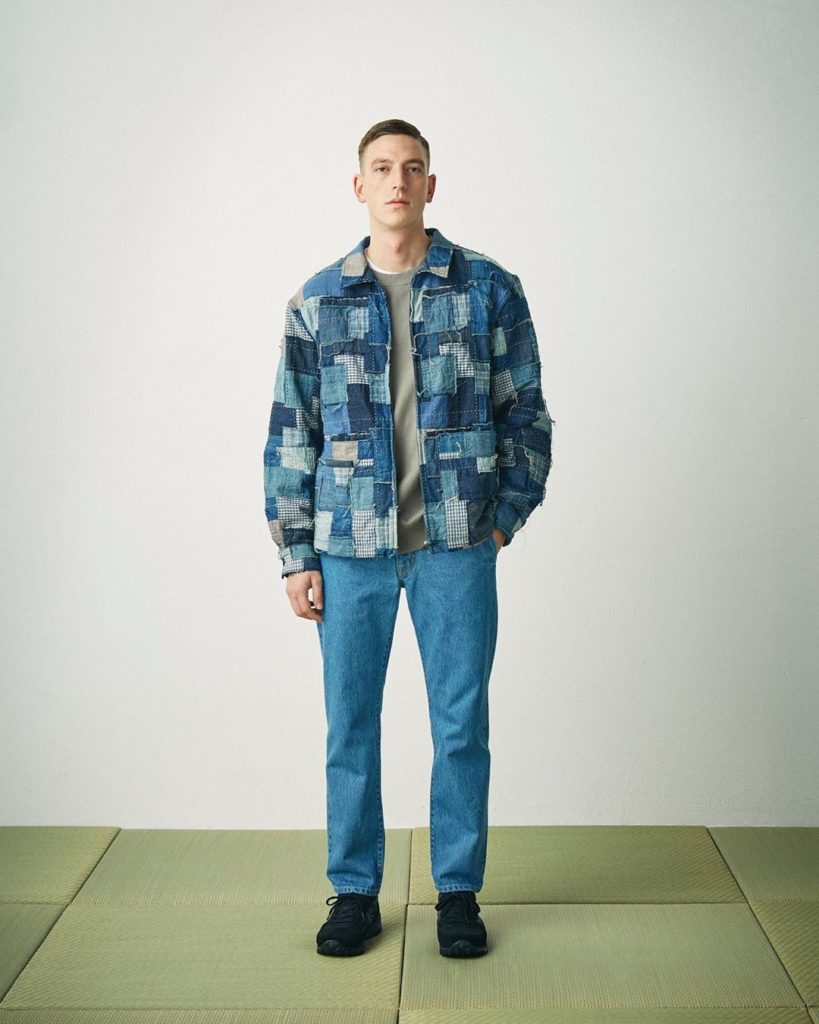
Japanese fashion brand Kuon incorporating boro into their pieces
Image credit: @kuon_tokyo
This way, a piece of cloth can be used for a long period of time. Besides its distinctive appearance – thanks to the harmony of various patterns and fabric – the garment can also be regarded as an artefact as it passes down from generation to generation.
6. Ikkan-bari (一閑張り) – lacquered paper baskets and boxes
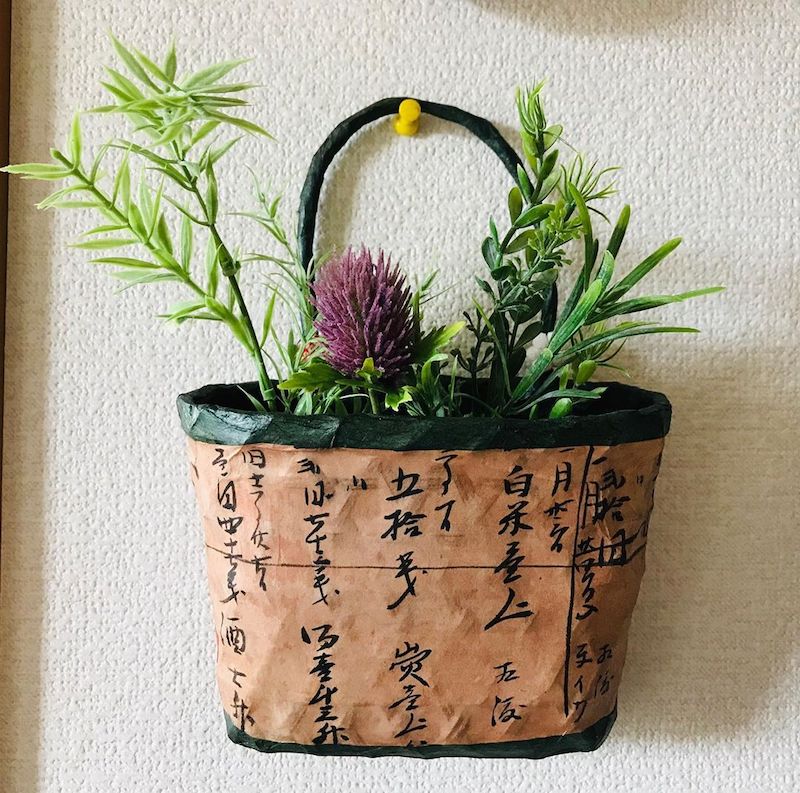
Image credit: @sennitiko
Ikkan-bari (一閑張り) is a traditional Japanese lacquered paper craft where layers of washi (Japanese paper) are pasted on bamboo or wood frames. The surface is then coated repeatedly with kakishibu (柿渋), a type of fermented juice derived from unripe astringent persimmon.
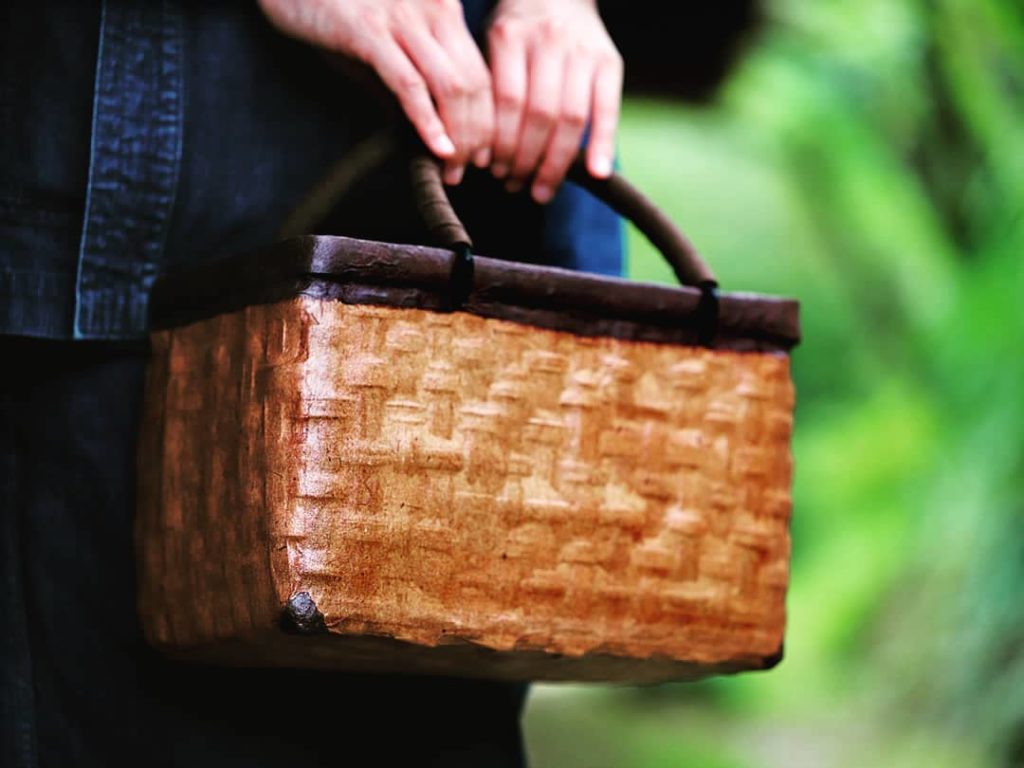
Image credit: @taketora1894
Kakishibu is an ancient Japanese method used to waterproof stuff, strengthening materials like fishing nets, fishing boats, umbrellas, and more. When it dries under sunlight, kakishibu produces a beautiful glossy amber colour and durability that can rival plastic carriers.
7. Tsugite (継手) – joining wood without glue and nails
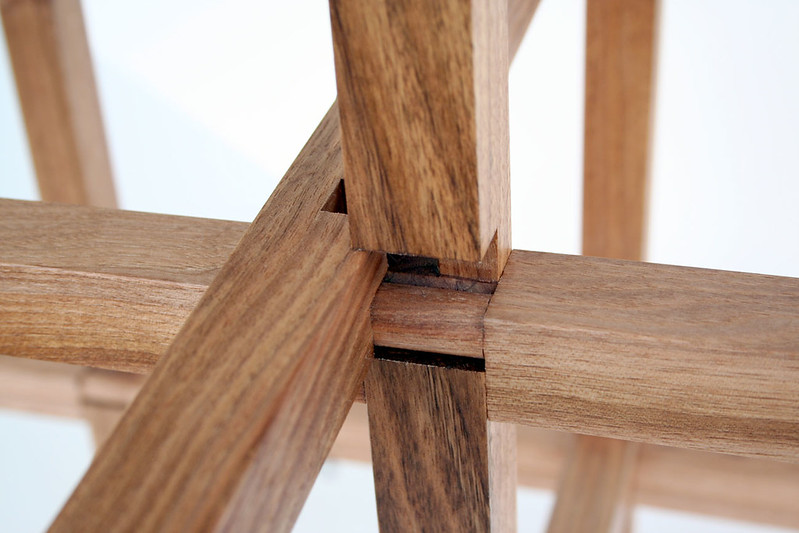
Image credit: Kengo Kuma
Think tetris but in the Japanese carpentry world. Tsugite (継手) is an ancient wood joinery method that has been used in Japanese architecture for centuries. By using complex grooves and intricate cuts that fit perfectly together, pieces of wood can be held together without glue or nails.
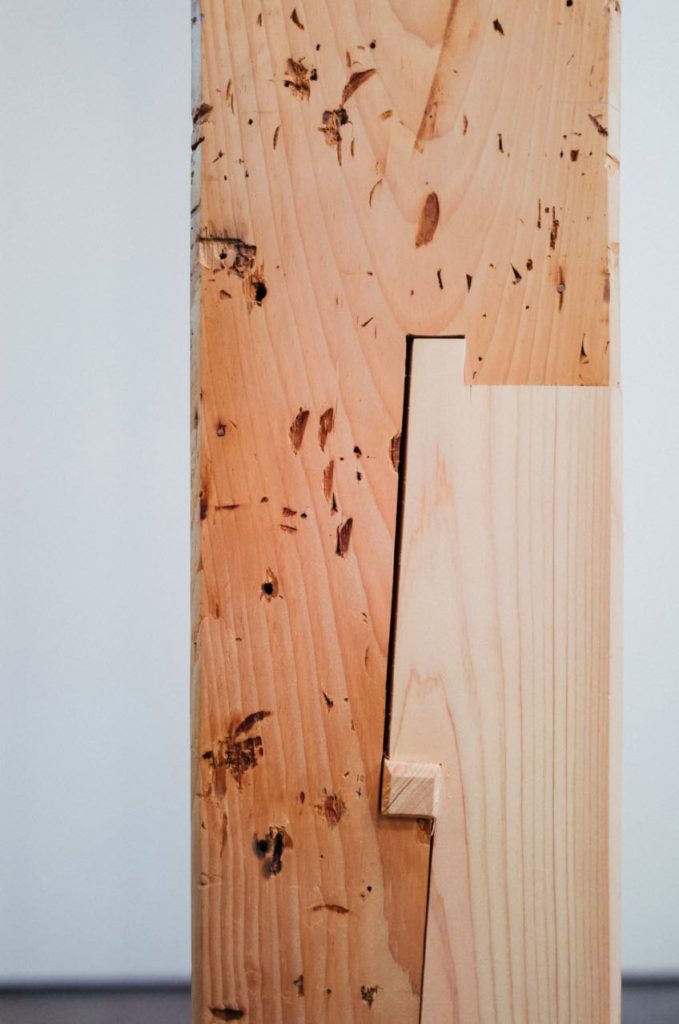
Image credit: Hidakuma
While tsugite has often been hailed as a work of art due to its precise craftsmanship, the technique is also handy when it comes to building sustainable structures.
Perfectly intertwined timbers are sturdy and less susceptible to corrosion caused by rusty metal components. This means that buildings can last longer and everything is biodegradable when it needs to be demolished.
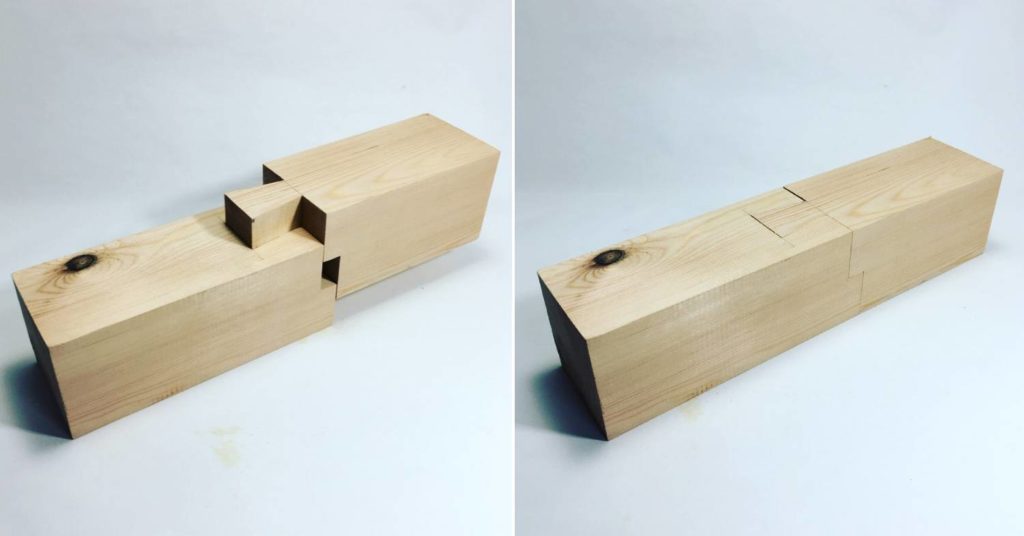
Image adapted from (left to right): @joinery_studio and @joinery_studio
One of the most well-known examples of this architectural ingenuity is the Kiyomizu-dera in Kyoto, where its famed wooden terrace is supported by intertwining pillars built without a single nail.
8. Furoshiki (風呂敷) – traditional wrapping cloth
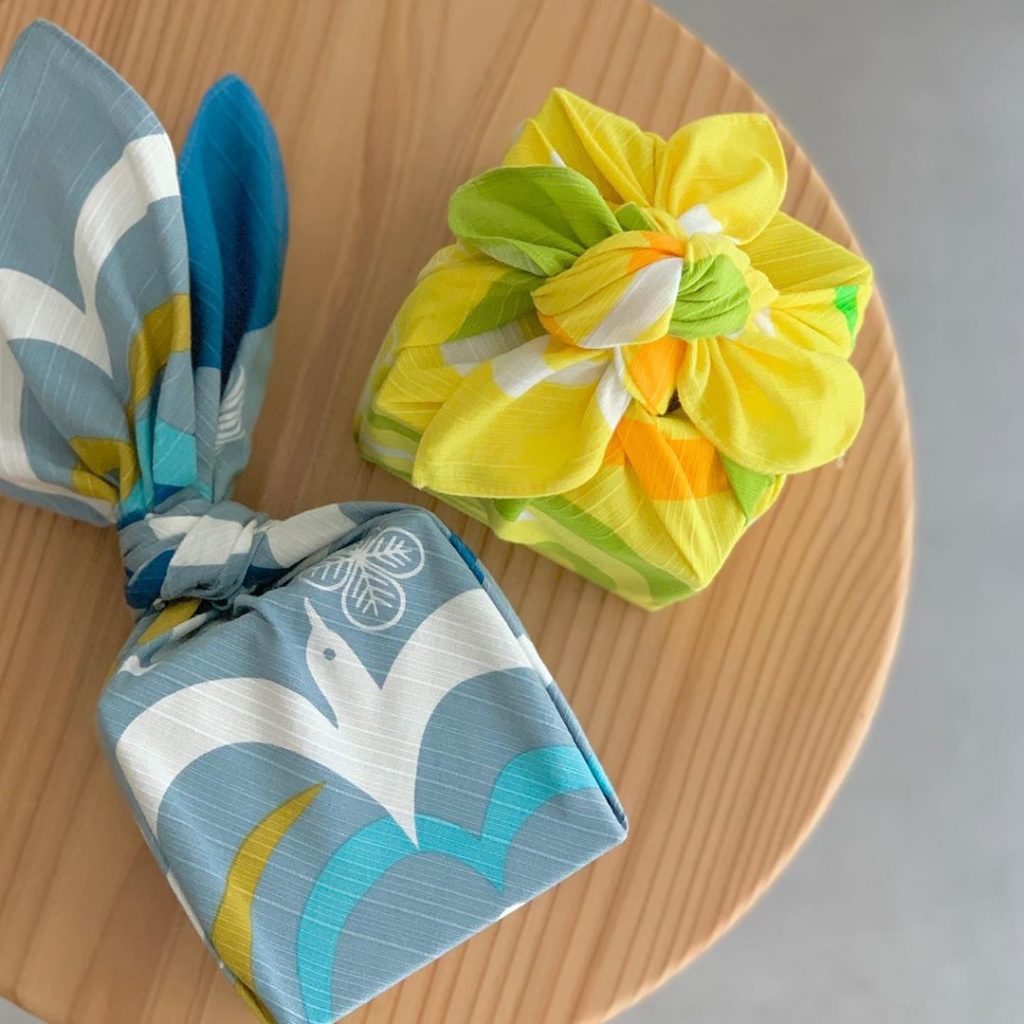
Image credit: @furoshiki__karakusaya_official
Dating back to as early as the 6th century, during the Nara Period, this square piece of fabric was initially used to wrap relics and valuable items found in temples.
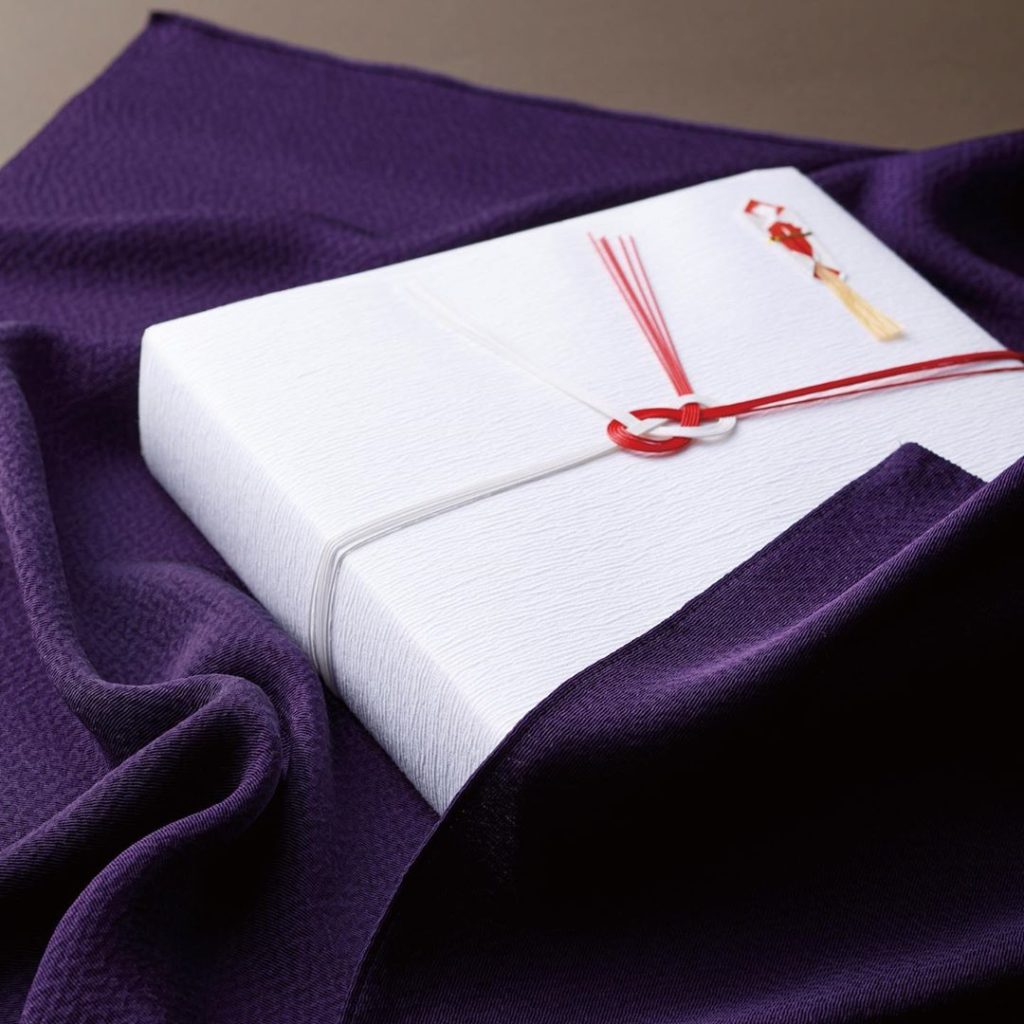
Image credit: @furoshiki_musubi
The name “furoshiki” (風呂敷) and its usage first came into fashion from the early 1300s to late 1500s, otherwise known as the Muromachi Period. Ashikaga Yoshimitsu, a shogun (将軍; military ruler) then, would invite feudal lords to use the large bathhouse in his residence.
To avoid confusion and mixing up clothes, guests would wrap their belongings in personal fabric. The cloth also functioned as bath mats after a bath, which explains the etymology of its name – furo (bath) shiki (spread).
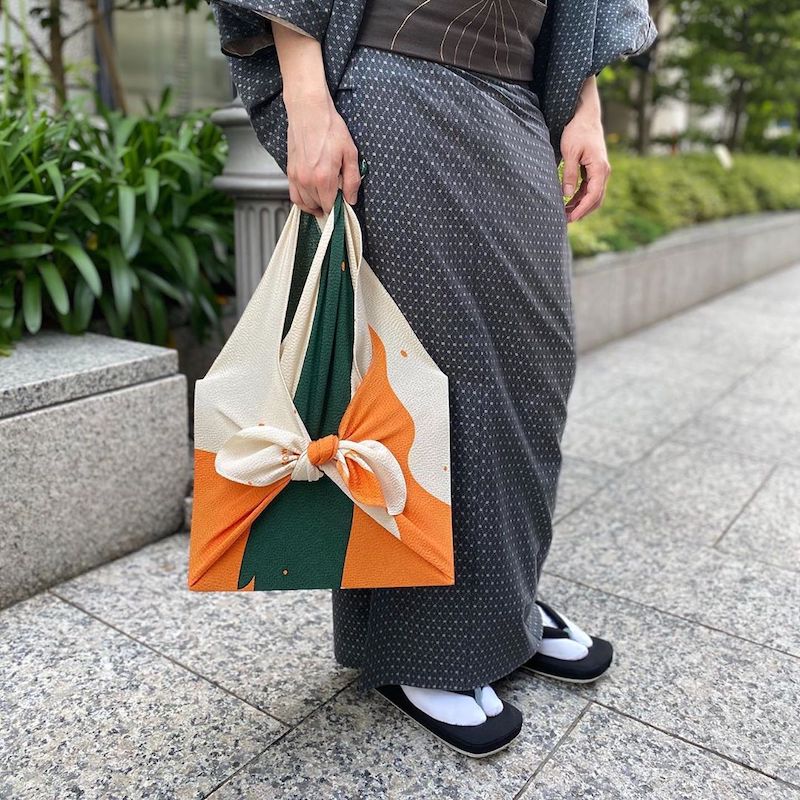
Image credit: @ginza_motoji
By the Edo Period, bathhouses became the norm and so did the practice of using furoshiki as a reusable carrier for one’s clothes. The handy piece of fabric soon became indispensable to everyday life as it could be used for a myriad of purposes, from wrapping gifts to serving as chic scarves.
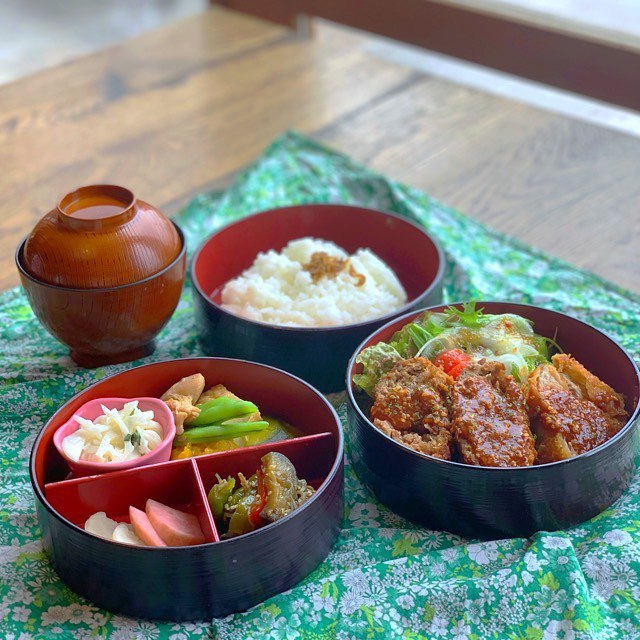
Furoshiki for bento wrapping
Image credit: @kaiii.aiii
However, with the spread of paper bags and disposable carriers in recent times, furoshiki has unfortunately taken a back seat. Regardless, it’s still a versatile yet eco-friendly piece that is used to wrap bentos and gifts today.
9. Sentō (銭湯) – public bathhouses
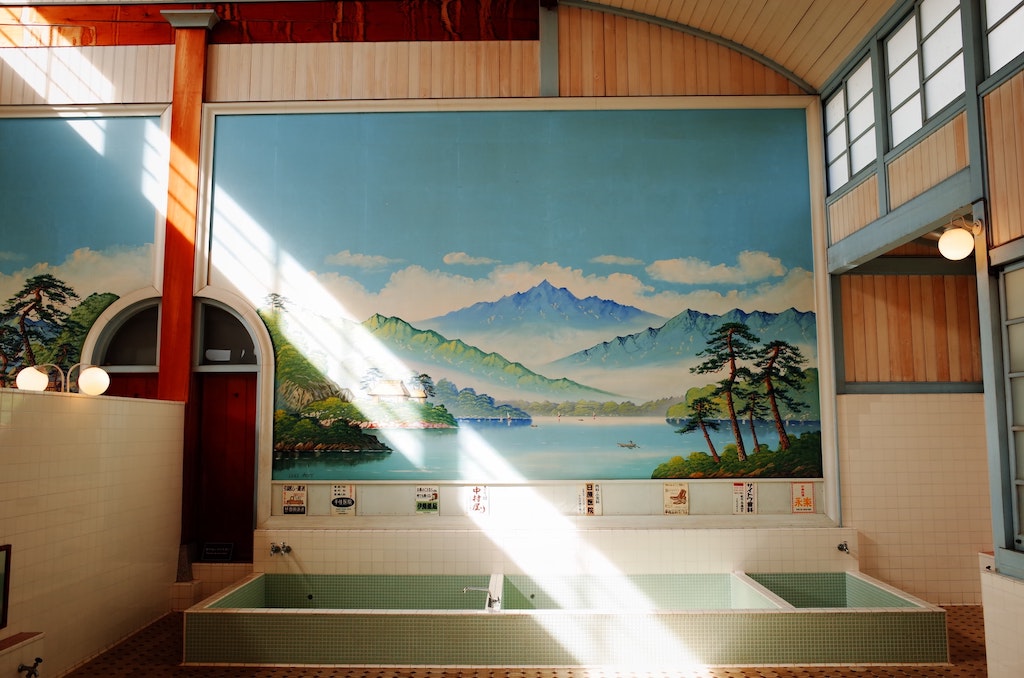
Image credit: Soyoung Han
Soaking in a pool of hot water with a bunch of naked strangers may be the pinnacle of Japanese culture. While bathhouses have existed since the ancient times – mostly in temples and for religious purposes – the concept of sentō (銭湯), or public bathhouses, only truly came into vogue during the Edo Period.
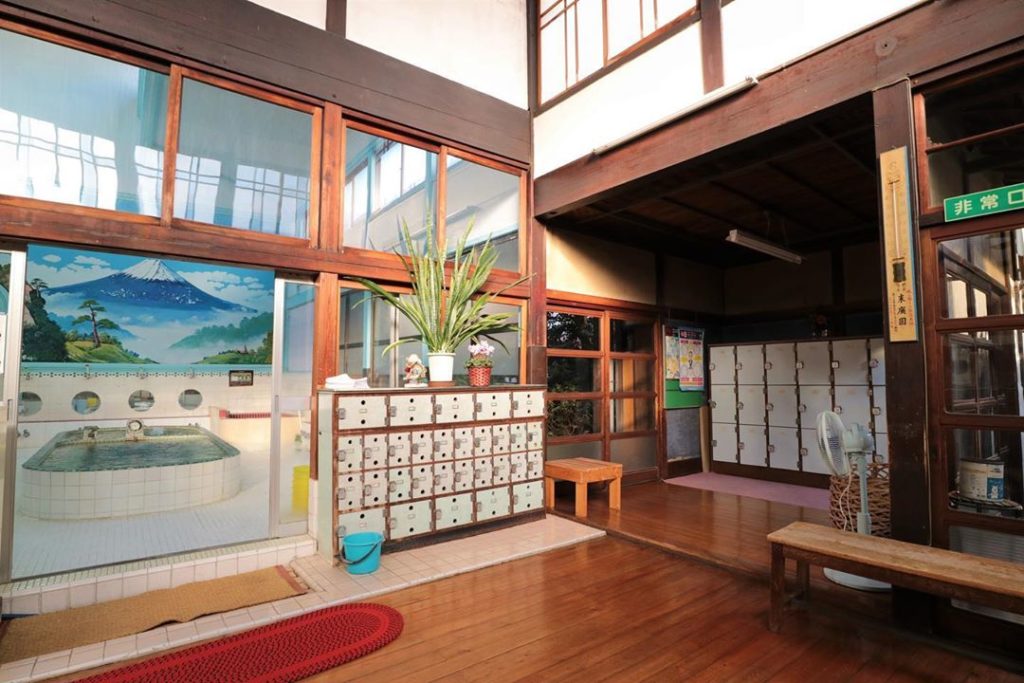
Image credit: @_stephaniemelanie_
Due to regulations for disaster and fire prevention back in the day, it was forbidden to have an indoor bath built in a commoner’s house. Thus, the average Edo resident would frequently visit public bathhouses for a soak. Shared sentō not only saves water, but also precious firewood used to heat the bath.

Image credit: @_stephaniemelanie_
Although houses today come with private bath tubs, the spirit of conservation remains. Before entering the bathtub, family members will have to rinse their body with a quick shower. As the shared bathwater remains clean, there is no need to change it each time a different family member uses it.
Easy Japanese sustainable habits
While the idea of a low impact lifestyle is well underway in some towns in Japan, the majority of the nation today has yet to fully embrace the concept of eco-consciousness. Perhaps these traditional Japanese sustainable habits can inspire us to live more sustainably, reuse items that are readily available in our lives, and reduce mindless consumption.
Check out these for more articles on Japanese culture:
- Summer activities in Japan
- Japanese hospitality
- Iconic city pop artistes and songs
- Strange Japanese laws
- Japanese shopping etiquette
Cover image adapted from (clockwise from top left): @lino_e_lina, Kengo Kuma, @kintsugi_._ and @etsudragonfly
